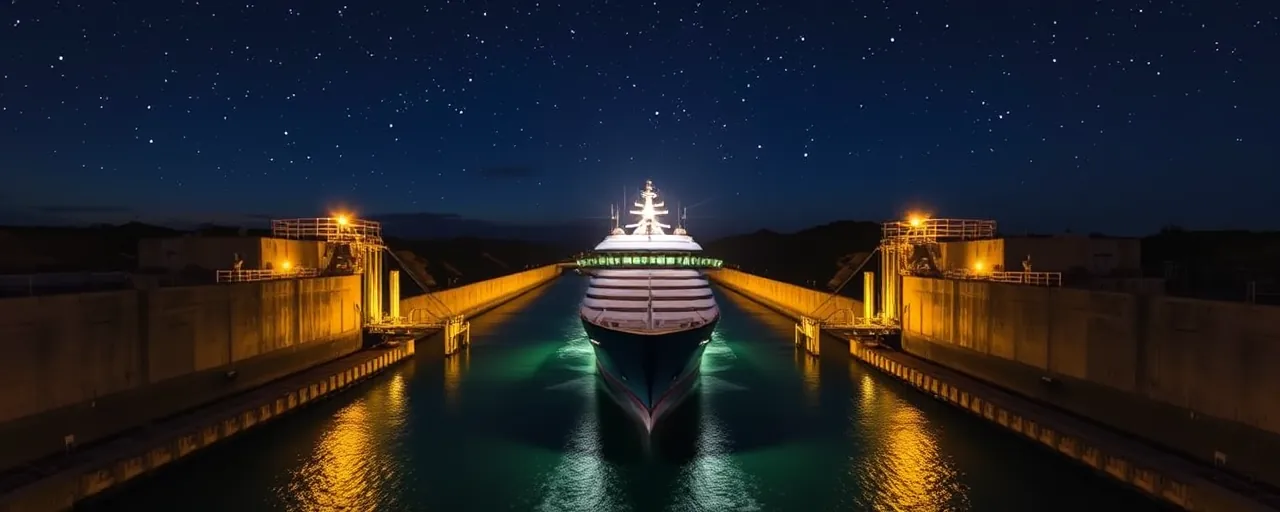A Historic Partnership Reborn
The Panama Canal has long stood as a testament to human ingenuity, a narrow ribbon of water linking oceans and fueling trade. On April 8, 2025, U.S. Defense Secretary Pete Hegseth joined Panamanian leaders at Vasco Nuñez de Balboa Naval Base to unveil a refurbished pier, a small but symbolic step in a renewed push to protect this vital waterway. The ceremony, steeped in history and purpose, highlighted a shared resolve to safeguard a passage that handles billions in goods each year. For the United States and Panama, it’s a partnership rooted in a century-old legacy, now facing fresh tests.
The canal’s significance hit home long ago when President Theodore Roosevelt visited in 1906, marveling at its construction. Today, that wonder persists, with over $250 billion in cargo passing through annually, much of it tied to U.S. ports. Yet the stakes have shifted. What was once a feat of engineering is now a geopolitical flashpoint, caught in the crosshairs of rising global rivalries. The U.S. and Panama are doubling down on their alliance, driven by a need to keep commerce flowing and external pressures at bay.
Strengthening Defenses, Step by Step
Recent weeks have seen a flurry of activity along the canal’s edges. U.S. military units, including the Coast Guard Cutter Kimball and guided missile cruisers like USS Chosin, have docked in Panama City, working side by side with Panama’s National Aeronaval Service. Joint exercises stretch across both coasts, from counter-narcotics patrols to air and maritime drills. A new Joint Security Cooperation Group, based in Panama City, now coordinates these efforts, signaling a long-term commitment to tighten ties.
The $5 million overhaul of Pier 3, funded by the U.S. Army Corps of Engineers, stands out as a concrete move to bolster infrastructure. It’s not just about ships docking; it’s about ensuring the canal’s lifelines stay robust against disruption. Plans for 2026 bring even bigger ambitions, with Panama set to host the Panamax exercise, a multinational effort to rehearse defending the canal. These steps reflect a calculated response to vulnerabilities that could choke trade or tip the balance of regional power.
Voices from both nations frame this as a practical necessity. U.S. officials point to the canal’s role in moving 70 percent of ships bound for American ports, cutting 8,000 miles off coast-to-coast journeys. Panamanian leaders, meanwhile, stress their sovereignty over the waterway, a point of pride since taking full control in 1999. Together, they’re building a framework to protect a shared asset, though the shadow of outside influence looms large.
China’s Shadow and the Sovereignty Debate
The canal’s security isn’t just about storms or smugglers anymore. Companies based in China control key infrastructure nearby, raising concerns about surveillance and leverage. Panama’s recent exit from China’s Belt and Road Initiative, a sprawling global investment network, underscores unease about Beijing’s reach. Trade with China has boomed across Latin America, hitting $450 billion by 2022, and Panama feels the pull. Yet leaders like President José Raúl Mulino argue that economic ties shouldn’t compromise control over their own backyard.
For the U.S., China’s presence stirs a different worry: a potential rival eyeing a strategic chokepoint. Nearly 100 American military vessels transit the canal yearly, and any hiccup could ripple through supply chains or naval operations. Some analysts see this as a classic power play, with Washington leaning on military might to offset Beijing’s economic clout. Others caution that painting China as the sole threat risks overlooking Panama’s own agency, as it balances lucrative trade with both giants.
A Broader Lens on Security and Faith
Beyond the hardware of ships and piers, this moment carries echoes of deeper values. Hegseth’s nod to a divine blessing at the pier’s unveiling ties into a U.S. tradition of weaving faith into security talks, a thread that’s grown since the Cold War. Research backs the idea that protecting religious freedom can stabilize nations and curb unrest, a point often raised in American policy circles. Here, it’s less about doctrine and more about rallying a sense of shared purpose.
The canal’s story has always been about more than logistics. Workers from both countries died carving it out of jungle and rock, a sacrifice that binds the U.S. and Panama in ways treaties alone can’t capture. Today, that history fuels a drive to keep the canal open to all, a lifeline for global trade that’s too critical to falter. Whether it’s faith or pragmatism at the helm, the goal stays clear: no single player can hold it hostage.
Looking Ahead Amid Uncertainty
This renewed U.S.-Panama pact lands at a pivotal time. The canal’s 2016 expansion already reshaped shipping, and its importance keeps climbing as trade routes tighten. Joint efforts now aim to lock in resilience, from cyber defenses to physical upgrades. Yet the push to counter China’s sway sparks questions. Will it deepen cooperation or stir tensions with nations wary of picking sides? Panama’s leaders seem intent on steering their own course, welcoming U.S. support without shutting out other partners.
For everyday people, the canal’s fate hits closer to home than grand strategies suggest. It’s about jobs tied to shipping, prices at the store, even the coffee in their cups. A century after Roosevelt’s visit, the canal still bridges worlds, its future hinging on how well these two nations navigate the pressures piling up. What’s certain is that neither side wants it to slip from their grasp, a point driven home with every ship that glides through.
